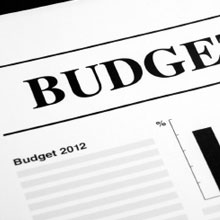Article by Investment U

The upcoming dividend tax increase will most likely make dividend paying stocks cheaper, which means great buys for long-term investors.
The President’s budget was released last week, and it wants to get back to taxing dividends at ordinary income levels for individuals making more than $200,000 a year and couples making more than $250,000. The proposal, which returns the tax treatment of dividends back to policies in place before 2003, would raise an estimated $206.4 billion over 10 years.
This may not be the most opportune time for such a plan when everyone is looking to dividends for steady returns over those historically low Treasury yields.
Some fund managers and financial advisers are already preparing for a dividend tax hike due to a monumental federal deficit and public sentiment heavily favoring higher taxes for the rich.
Valuations Will Fall
Higher taxes would most likely make companies that pay dividends cheaper, experts say.
In the past, dividend-paying stocks have lagged non-paying companies for about six months after the tax increase, according to Ned Davis Research Group.
But analysts say that those investors with a long-term horizon might make out because of these declines.
“If history is any guide, this will provide a buying opportunity for the dividend-oriented investor,” said Linda Duessel, a Senior Equity Strategist at Federated Investors who specializes in equity income. She – like Investment U expert Marc Lichtenfeld – expects dividend-paying stocks to outperform their counterparts over the long term.
Also, take this statement from Matt McCormick, VP and Portfolio Manager at Bahl & Gaynor, into account: “My conclusion is this, if you see taxes go up… that’s going to impact the market to the downside… I think investors will go back into dividend-paying stocks to protect on the downside.”
Also Expect Increasing Dividends
Last year brought a record 22 dividend initiations by companies in the Standard & Poor’s 500 Index. There have been five so far in 2012. And analysts believe that an evitable dividend tax increase would push companies to return the record amounts of cash on their balance sheets back to the investors.
When dividend taxes were scheduled to return to earlier levels in 2010 – when there was a fear that the Bush-era tax cuts would expire – more than 100 companies declared special dividends that year to give back some cash to shareholders ahead of the planned tax change, according to Standard & Poor’s.
There’s a lot of space for a larger number and dollar amount of payments. While 397 S&P 500 companies pay dividends, the average since 1980 is 413 companies. And payments as a percentage of profits are only 30% now, versus a historical average of 52%, according to S&P.
All told, dividend spending by S&P 500 companies should increase 15% this year, estimates Howard Silverblatt, Senior Index Analyst at S&P.
A Solid Play for Growing Dividends
I think the easiest way to take advantage of the changing landscape would be to buy a mutual fund focused on companies with growing dividends. Two that come to mind are the T. Rowe Price Dividend Growth (PRDGX) or Vanguard Dividend Growth (VDIGX) funds. The T. Rowe Price fund ranks among the top one-quarter of its peers for 10-year performance. The Vanguard fund ranks among the top one-tenth.
Good Investing,
Jason Jenkins
Article by Investment U